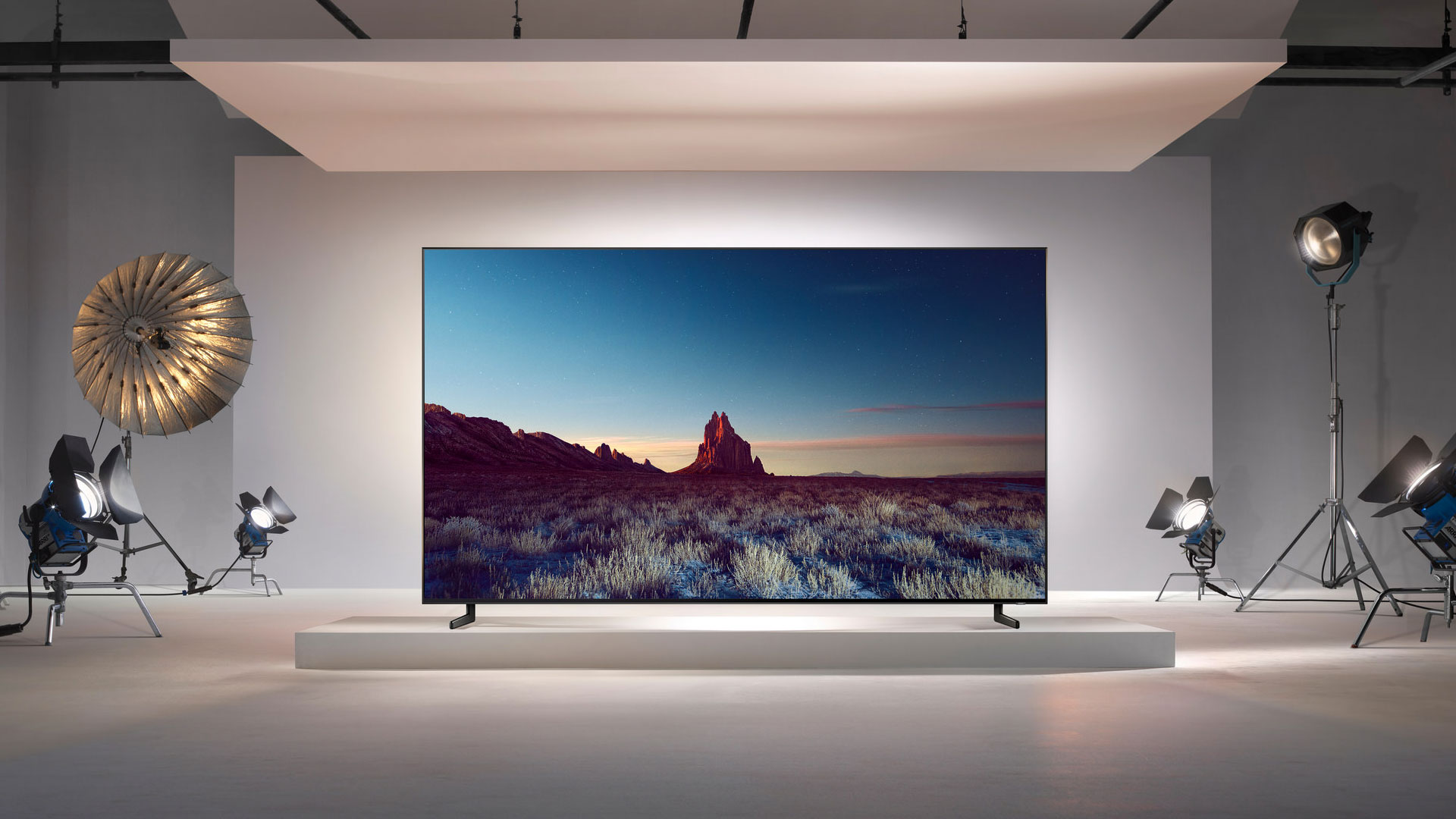8K TVs are here and becoming more popular every year. At first, some brands were hesitant about 8K TV tech. But now its biggest advocates are plunging ahead with multiple models featuring the super high resolution. But does 8K work well on every TV? Or do you need a certain size to really see the benefit?
As standard, 8K TVs don’t usually get smaller than a 65-inch size. They mostly tend to come with 75-inch and even 85-inch sizes For example, in the US in 2020, the flagship Samsung 8K QLED, the Q950TS, only came in an 85-inch size, which speaks to the kind of big-screen experience Samsung is pushing for its 8K sets. In 2021 that’s changed and this year’s flagship, the Samsung QN900A Neo QLED 8K TV comes in 65-inch, 75-inch and 85-inch sizes.
There is, however, the odd appearance of a 55-inch 8K TV every so often. This might seem like a great TV. A kind of mid-size, super-high resolution set bringing 8K to a more compact form factor and lower price point. But is an 8K TV worth it on a 55-inch screen?
Is a 55-inch 8K TV worth it?
55 inches is normally the flagship size for a 4K TV (although that might change as our taste for TVs get bigger), with 4K resolution not being found on smaller 32-inch TVs, and starting to be worth including on 40-inch TVs. When you get to sizes that are larger than 55-inch, of course, it takes more pixels to appear like a detailed picture.
4K still looks great on a 65-inch screen, or a 75-inch TV in our minds – though there’s no denying that the pixel density decreases as you expand the size of the display.
Pixel density is just what it sounds like: how close together the pixels in your screen are crammed. If they’re far apart, the image loses sharpness, so a higher pixel density is generally good. An 85-inch 8K TV, for one, has 104 PPI (pixels per inch), which is the same density you’ll find on a 43-inch 4K TV. By comparison, an 85-inch 4K TV has only 52 PPI (yes, it’s exactly half the amount).
A Samsung rep tells us that 8K isn’t overly necessary at 55 inches, really coming into its own at 65 inches and above.
What this means is you really need 8K resolution for an 85-inch screen to look as detailed and natural as a 43-inch set with 4K resolution. This isa clear argument for the higher resolution at that larger screen size.
This gets muddier on smaller sizes, though. A 55-inch 8K TV has 162 PPI, but there isn’t a single TV size with 4K resolution that has such high pixel density – a 24-inch or 32-inch TV would get close, but you simply don’t need that many pixels on such a small screen.
A Samsung rep tells us that 8K isn’t overly necessary at 55 inches, really coming into its own at 65 inches and above. This means, if picture quality is a priority for you, you might want to spend your pennies on a great 55-inch 4K TV, or splash out on a larger size with 8K resolution. However, the option of a 55-inch 8K TV is there for those wanting to test out, buy-in, or show off the latest high-end resolution spec in their home.

What 55-inch 8K TVs are out there?
At the moment, 55-inch 8K TVs are limited to about one new Samsung TV a year. In 2019, it was the 55-inch model of the Q900R; in 2020, it’s the Q700T, a mid-priced 8K TV that comes in both 55-inch and 65-inch sizes.
The Q700T is currently only on sale in the UK, though US shoppers can still find last year’s 55-inch Q900R for just $2,299.
What’s interesting here is that the 55-inch Q700T starts at £1,999 (around $2,700 / AU$3,600), which is technically cheaper than the flagship 4K model, the Q95T – priced £2,299 for the same size. So there’s certainly a cost argument for getting a budget 8K model instead of a high-end 4K one.
You are making do with a 60Hz panel, though – so keep in mind, if you’re thinking of buying this set, that the frame rate isn’t what it could be. That also means you won’t be able to get 4K/120Hz passthrough from a next-gen games console, or even 8K/60Hz (there’s no HDMI 2.1 port, surprisingly).
While the Q700T carries Samsung’s high-spec Quantum Processor 8K chip, it does make do with half the dimming zones of the Q800T, with a lower HDR rating, meaning both brightness and brightness control are likely to be lower. We expect some savings have been made in materials, too – though you're still getting premium features such as OTS+ (Object Tracking Sound) for three-dimensional audio, though.
- Check out the best 8K TVs 2021
No comments:
Post a Comment